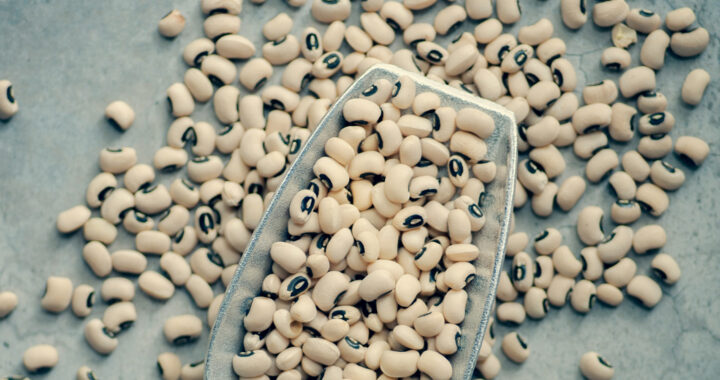A virus that infects black‑eyed pea plants is now being explored as an unexpected weapon against cancer. Research shows that the cowpea mosaic virus, harmless to humans, can awaken the immune system in ways other therapies cannot. This makes it an oncolytic virus candidate that can be studied further in better animal models and human clinical trials.
Nanoparticles from the Plant Virus Cowpea Mosaic Virus Activate Innate and Adaptive Immunity in Tumor Models and Demonstrate Superior Immunogenicity Over Cowpea Chlorotic Mottle Virus
Background
Oncolytic viruses are naturally occurring or genetically modified viruses that target and eradicate cancer cells through selective infection and replication. This process is called oncolysis. It further stimulates the immune system to recognize and eliminate remaining tumor cells. Hence, because of this process, it is also a form of cancer immunotherapy.
Some plant viruses have been studied as potential oncolytic viruses. One particular plant virus that infects black-eyed pea plants has remarkable immunogenic properties. Previous studies showed that the cowpea mosaic virus shrank tumors in animal models. However, despite replication experiments, the exact biological mechanism remained unclear.
Researchers spearheaded by Nicole Steinmetz and first author Anthony Omole at UC San Diego investigated the anti-tumor effects of cowpea mosaic virus. This involved performing mechanistic comparisons with cowpea chlorotic mottle virus. This virus also infects black-eyed pea plants. It is a structurally similar relative but lacks anti-cancer effects.
Important Findings
• Tumor Injection Recruits Innate and Adaptive Responses: Direct intratumoral injection of cowpea mosaic virus in mice and canine cancer models initiates infiltration of neutrophils, macrophages, and natural killer cells. It also activates B cells and T cells. This leads to local tumor destruction and systemic immune memory.
• Cowpea Mosaic Virus and Cowpea Chlorotic Mottle Virus: Both viruses have similar structures and cellular uptakes. The two form about 30-nanometer nanoparticles and enter immune cells at similar rates. However, despite these similarities, only cowpea mosaic virus induces effective anti-tumor immunity.
• Interferons Versus Pro‑Inflammatory Interleukins: The cowpea mosaic virus strongly stimulates types 1 to 3 interferons. These are signaling proteins that trigger an immune response to viruses and certain cancers. The cowpea chlorotic mottle virus induces mainly pro-inflammatory interleukins that do not lead to tumor clearance.
• Longer RNA Persistence Toll-Like Receptor 7 Activation: The RNAs of the virus also persist in immune cells and localize within endolysosomal compartments. This leads to the activation of Toll‑like receptor 7 or TLR7. This protein is crucial in the innate immune response as it initiates antiviral and anti-tumor immunity.
• No Observed Viral Replication and Biological Toxicity: A related study explained that the cowpea mosaic virus enters macrophages through endocytosis but does not replicate, express viral proteins, or integrate into the cytosol. It undergoes gradual degradation in lysosomes and activates immune pathways without cytotoxicity.
• Scalable Production Through Molecular Farming Technique: The cowpea mosaic virus can be produced economically using molecular farming. This centers on cultivating the virus by planting and growing black-eyed pea plants in a controlled setting. This provides a low‑cost and manageable immunotherapy platform.
Takeaways
The findings above introduce a novel immunotherapy paradigm. To be specific, unlike engineered oncolytic viruses that replicate in tumors, cowpea mosaic virus works as an adjuvant. This plant virus works against cancer cells or tumor mass by activating both innate and adaptive immune responses without infection or viral replication and biological toxicity.
Future research directions are promising. The cowpea mosaic virus can be refined further through bioengineering to maximize its effectiveness and safety profile before human trials. Moreover, using combination strategies, this plant virus can be paired with checkpoint inhibitors or other immunotherapies to amplify systemic responses.
Using cowpea mosaic virus to treat cancers can be first applied in veterinary medicine. Current cancer treatments for animals are limited and expensive. This provides another low-cost option for veterinarians and pet owners. Success in veterinary applications would generate robust safety and efficacy data. This eases its transition to human clinical trials.
FURTHER READINGS AND REFERENCES
- Omole, A. O., Newton, H. S., Cedrone, E., Nematpour, K., Xie, S., Zhao, Y., Tran, B., Dobrovolskaia, M. A., and Steinmetz, N. F. 2025. “Comparative Analyses for Plant Virus-Based Cancer Immunotherapy Drug Development.” Cell Biomaterials. 1(6): 100095. DOI: 1016/j.celbio.2025.100095





